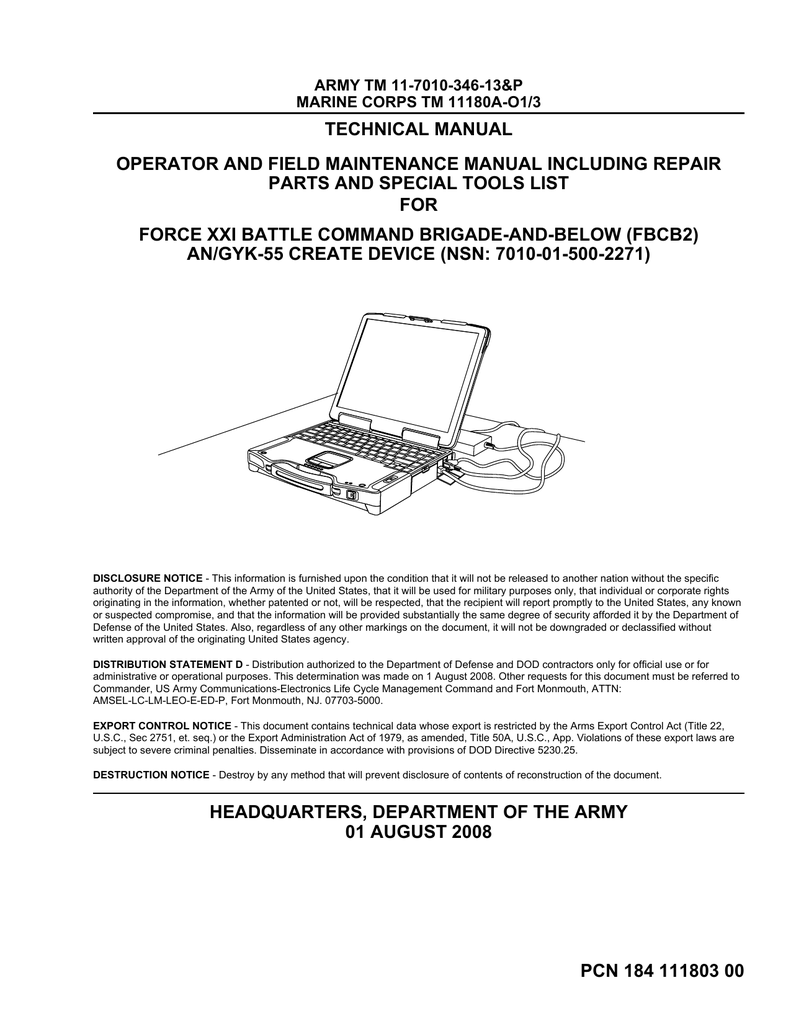Fbcb2 Bft Manual
Posted By admin On 05.02.20Books.google.co.th - Over 5,300 total pages.MARINE RECONReconnaissance units are the commander’s eyes and ears on the battlefield. They are task organized as a highly trained six man team capable of conducting specific missions behind enemy lines.
Employed as part of the Marine Air- Ground Task Force, reconnaissance. Manuals Combined: U.S. Marine Corps Basic Reconnaissance Course (BRC) References.
FBCB2 Operations Session Force XXI Battle Command Brigade and Below (FBCB2) is a -based communication platform designed for commanders to track friendly and hostile forces on the. It increases a vehicle commander's of the battlefield by gathering information near real-time based on vehicle locations being updated on the battlefield.
This information is viewed graphically, and exchanged via both free and fixed text message formats (instead of verbal collection of reports). The location data for friendly forces is collected through the (EPLRS) line of sight tactical radio network and (BFT) satellite network. Contents.

Development The development of the system is managed by Project Manager, Force XXI Battle Command Brigade and Below, a component of the U.S. Army's Program Executive Office – Command Control and Communications Tactical (PEO C3T). PEO C3T is based at in. The original Army Program Executive Officer was William Campbell (LtG, ret). The original contractor program manager was. FBCB2 was tested under the First Digitized Division 4th Infantry Division based in, and 1/25 infantry out of, Washington. Series of what were called 'Advanced Warfighting Experiments' at the near Barstow, California, starting in 1997.
The division conducted Limited User Test on the equipment in 1998, and the system was approved for production. FBCB2 was then tested and implemented under the concept that stemmed from /. Recently the, the have reached agreement to standardize on a new variant of the system to be called Joint Capabilities Release (JCR) developed by the Project Manager, Joint Battle Command-Platform (PM JBC-P) that should start being fielded in 2013. JCR takes advantage of the BFT-2 network, a new satellite infrastructure that can handle significantly more data than the first BFT. Deployment The awarded (that became a part of in 2002) the prime contract for FBCB2 in 1995.
ESP (Engineering Solutions and Products) is now the prime contractor for the system. FBCB2 was first used in actual military operations in the former Yugoslavia in 1998.
It played a key role in operations in Iraq and Afghanistan starting in 2003, where it is still in use. Work has begun on plans to reach the level of nearly 160,000 tracking systems in the Army within a few years. Awards The FBCB2 system, and the system have won numerous awards and accolades, including: recognition in 2001 as one of the five best-managed software programs in the entire U.S. Government, the 2003 Institute for Defense and Government Advancement's award for most innovative U.S. Government program, the 2003 Federal Computer Week Monticello Award (given in recognition of an information system that has a direct, meaningful impact on human lives), and the Battlespace Information 2005 'Best Program in Support of Coalition Operations'. See also.
Fbcb2 Operator's Pocket Guide
References. Headquarters, Department of the Army. 1 August 2008.
Fbcb2 Bft Operations Manual
Retrieved 2010-03-20. December 2009.
13 February 2013. Crosstalk, the Journal of Defense Software Engineering, January 2002. Factiva, 1-23-2004. Notes. (PDF).
University XXI. Provides the Power of the Network to Share Situational Awareness (SA) and Command andControl (C2) Information Toward the Efficient Use of Resources within the Enemy's Decision Cycle at, at Austin, and.
Global Security. FAADC3I provides the battle captains the tools necessary to pierce the fog of battle, and the ability to place the correct size force, at the correct location, at the critical time needed to defeat enemy air threats.